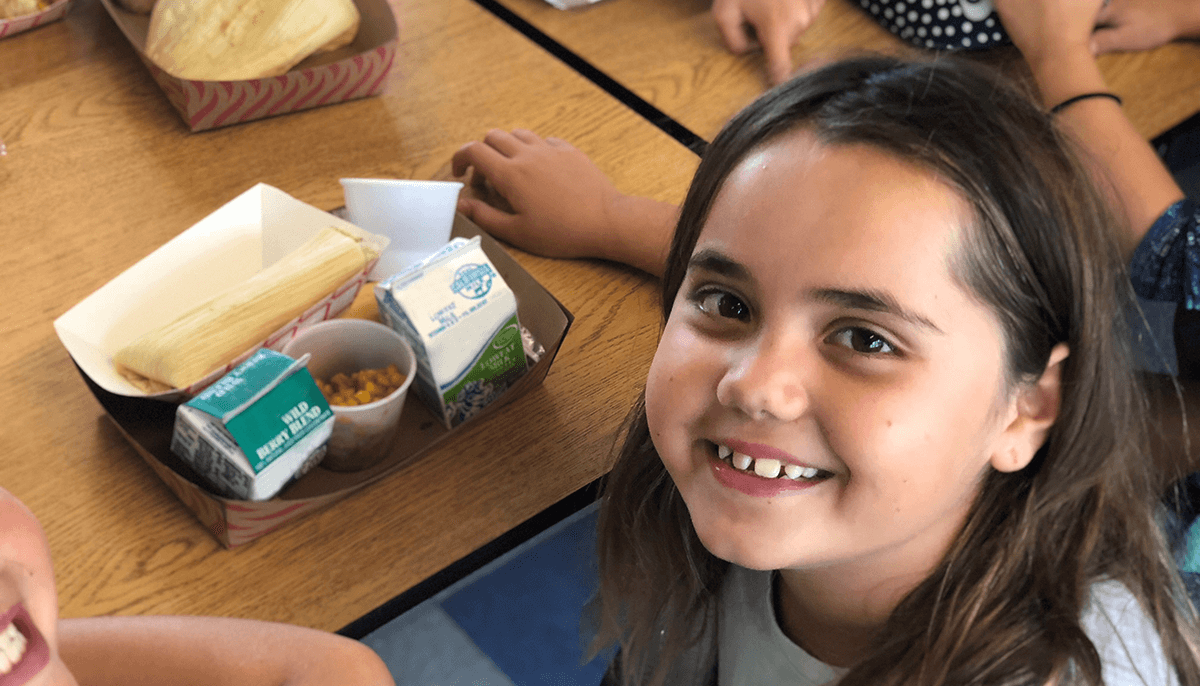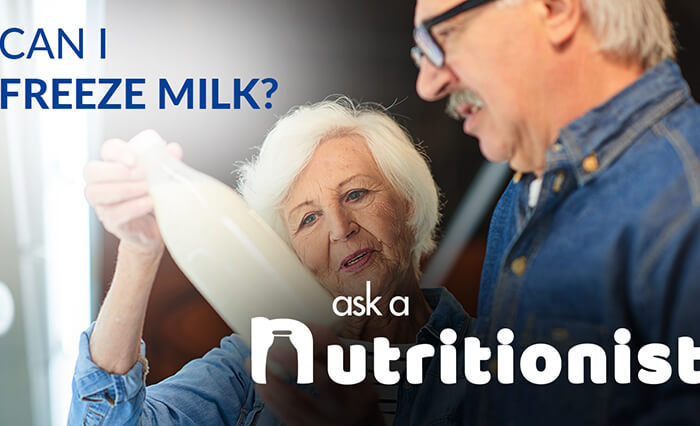By: Megan Holdaway, RDN

September 29, 2021 is World School Milk Day
In 2000, the Food and Agriculture Organization of the United Nations recognized milk’s important contribution to improving the health of children by declaring World School Milk Day. This annual date, on the last Wednesday of September, is intended to celebrate and draw attention to the school foodservice programs that promote childhood nutrition by bringing dairy milk to school cafeterias.1 Milk is recognized around the globe as an important part of school meals, providing students with direct access to the nutritious foods they need for optimal growth.
Dairy Council of California proudly joins organizations in countries throughout the world in celebrating September 29 as World School Milk Day 2021 and we invite you to join in this international celebration.
In the U.S., schools serve 4.9 billion lunches and almost 2.5 billion breakfasts each year. Of that number, more than 22 million students depend on free or reduced-price lunch and more than 12.5 million depend on free or reduced-price breakfast, making school meals—which include milk as an essential component—a key food access point for children who live in low-income and/or food insecure homes.
In California alone, nearly 6.2 million students attend public schools, and over 60% of them live in low-income households. In fact, most of our low-income students qualify for free school meals, accounting for over 540 million lunches served in over 10 thousand schools per year throughout California.
It is important to note that these figures are from before the COVID-19 pandemic impacted children, families and school communities throughout the United States. Before the pandemic crisis, food insecurity in the US was at the lowest point seen since before the Great Recession in
Dairy Council of California’s Commitment to Healthy Eating
While World School Milk Day has been established for over 20 years, Dairy Council of California’s commitment to elevating the health of children and families through the pursuit of lifelong healthy eating habits spans a century. In 1919, California dairymen Sam Greene and Chester Earl Gray saw an opportunity to improve the health of schoolchildren by addressing rickets, a public health concern, by making milk available to students at school, and providing students and families with access to free nutrition education.
Since then, Dairy Council of California has championed children’s health by advocating for student access to nourishing, nutrient-dense foods like milk and dairy foods in the school cafeteria and by providing important nutrition education to teach students and their families how to eat healthfully.
Milk- A Super Nutritious Beverage
Dairy milk is a whole, minimally processed food that is an important component of school lunches all over the world. With its unique package of nutrients that can be difficult to replace in a healthy dietary pattern, milk brings significant value to school meals, helping to bridge the nutrient gaps that currently exist in children’s diets.2 Taking away milk or replacing milk with foods that are less nourishing may have unintended consequences.
Additionally, milk’s benefits extend beyond its immediate nutrient contribution; there is a growing body of evidence that links the consumption of milk and dairy foods to a wide range of health benefits, from well-studied associations like controlling blood pressure and improving bone health to newer associations like reducing the risk of diabetes and heart disease.3
Milk is an Important Part of School Meal Programs
School meal programs are especially beneficial for children that live in food-insecure households, meaning they live without consistent access to affordable, nutritious foods.
Research shows that students who eat breakfast do better in school, yet many students do not or are unable to eat breakfast before school.5, 6 School meal programs provide for society’s most vulnerable population—children—and increase their access to nutritious and nourishing foods like milk.
Students that participate in school meal programs rely heavily on the nutrient-dense foods that are provided at school to nourish their growing bodies and meet the specific nutritional needs of childhood and adolescence. In the United States, nearly 75 percent of children do not consume adequate amounts of dairy, vegetables, fruits and whole grains.7 To ensure optimal growth and development, nutrient-dense foods need to be made readily available to all children. School meal standards that include milk and dairy foods are crucial to the short- and long-term health of children.
California recently became the first state in the nation to launch the Universal School Meals Program, providing free school meals to all students in kindergarten through 12th grade, increasing access to nutritious foods for all children to help them grow, learn and thrive.
Fun Ways to Celebrate World School Milk Day
Celebrations can be big or small. In many countries around the world, free milk is given out to school children. Other celebrations can include celebrity visits to schools, educational materials, and fun competitions. Some schools set up milk cafes or smoothie bars, or even “milking stations”. Dairy companies will sometimes donate t-shirts, and other promotional materials for children.
Dairy Council of California’s Mobile Dairy Classroom is another great way to celebrate World School Milk Day. During the virtual field trips, students will get to see a dairy farmer and a cow as they learn about dairy farming, including how milk and dairy foods are produced and the nutritional benefits of dairy products. Sign up with Dairy Council of California on the Farm to You Field Virtual Trips web page.
Make Nutrition Education Part of Your World School Milk Day Celebration
While access to nutritious foods such as milk is important for growth and development, educating students on how to eat healthfully is just as critical. On World School Milk Day, educators have an opportunity to promote milk consumption with nutrition education and educate on how milk is consumed around the world.
Lessons on how to develop healthy eating patterns have the potential to stay with children for a lifetime. Educators are uniquely positioned to help encourage students to choose minimally processed foods that are rich in nutrients. Modeling healthy eating patterns through school breakfast and lunch programs reinforces nutrition education efforts that may take place in the classroom, cafeteria and community.
Teachers can incorporate nutrition education in the classroom by using the nutrition curriculum created by Dairy Council of California. Through simple nutrition videos and lesson plans, educators can begin to plant the seeds of lifelong healthy eating choices in their students. Nutrition education in the classroom empowers students to make healthier food choices in the cafeteria and beyond.
Start the School Year with Nutrition Education
Dairy Council of California offers nutrition education lessons that are standards-based, free, include information on healthy dietary patterns, and lend themselves to a variety of learning experiences including in-person and virtual. For support and resources that are currently available, visit Dairy Council of California's curriculum web page.
How to Join the World School Milk Day Celebration
For More Information
Visit Food and Agriculture’s network web page to join the community and the Food and Agriculture’s School Milk Day web page for more information and to share what you plan to do.

Megan Holdaway, RDN
Megan Holdaway, RDN
Megan Holdaway is a registered dietitian nutritionist and the Nutrition Science Program Manager at Dairy Council of California.
A Registered Dietitian Nutritionist weighs in on the nutrition science that supports dairy consumption.

Watch the latest episode of Ask A Nutritionist and discover if you can freeze milk.

Subscribe to our blog to stay up to date on the latest news, products, and more.